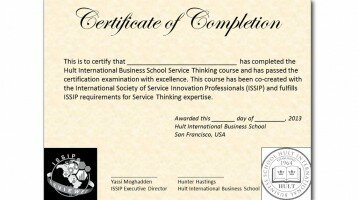We help our clients to improve their customers’ experience, by making the shift to Service Thinking.
We work hands-on with your team in projects to solve customer experience problems.
Who can benefit from Group CVC consulting services?
Product-dominant companies who want to shift towards services and customer-centricity.
Companies who are making the shift to services and need to accelerate for the digital economy.
Start-ups and small and medium / regional companies who have great product and engineering but need strengthening in customer empathy and understanding.
We offer a two-phase approach
We sometimes like to show the model in this figure 8 form to indicate two things:
- It’s non-linear. You can start with any one of the principles and you don’t have to apply them all or in any particular order. Any one of these gateways can provide running room towards a new growth opportunity.
- It’s non-prescriptive. There isn’t only one way to arrive at the right answer. Often, a winning strategy will emerge as a result of unexpected developments in the market, and the winning companies are agile enough to see the opportunity, seize it and run with it. In fact, that agility is built in to the model in the Run-Transform-Innovate or R-T-I principle.
It is nonetheless helpful to think of applying the model in two stages – first assess, then respond.
Assessing the Provider-Customer Relationship
- Service=Experience–The first principle is that the output of service is an experience, and it is at the experiential level that assessment should begin. All experiences are consumed subjectively by individuals who are idiosyncratic in their emotional reactions. Service Thinking is a tool to find experience gaps, size them, prioritize them and link them to opportunities in the broader service system.
- Co-Creation of Value–Co-creation is the new secret weapon of Service Thinking. It requires you to let go a little bit – put the customer more in the driving seat, listen to them more than to yourself or your own organization, weight their points of view higher than your own company’s. Let Go To Grow is Linda Sanford’s term – discover the co-creation opportunities by ceding some control to customers.
- Service Systems–Another key element is understanding the customer’s service system – which means the people, technology, information flow and practices behind their business – and humbly fitting in to that system rather than trying to change it or demanding replacement of some parts of it. The typical entry point is specialization with integration. Demonstrate a new specialized contribution that can solve a known experience gap.
Enterprise Response
- Modular Business Architecture–Your ability to respond to opportunities identified in the assessment phase is unlimited. We provide the solution via a partnership, network or any other form of componentized integration.
- Global-Mobile-Social Scalable Platform–The former benefits of scale can now be downloaded from the internet as a service.
- Run-Transform-Innovate–A major source of service innovation success is the agility to identify winning experiments and then quickly allocate resources to expanding them. Continuous experimentation is the right stance in a world of dynamic change, and it requires mastery of R-T-I.
- Multi-Sided Metrics–The fourth response tool is to examine your metrics and make sure you are measuring the right things.
Find out how we can help your company take advantage of the new service economy. Contact us today.
Download (PDF, Unknown)
